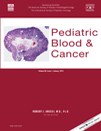Importance of voriconazole therapeutic drug monitoring in pediatric cancer patients with invasive aspergillosis†
Conflict of interest: Nothing to declare.
Abstract
Background
Voriconazole is the drug of choice for invasive aspergillosis (IA) and drug levels are influenced by interactions with other drugs and genetic predisposition. We performed a retrospective analysis of voriconazole drug levels and investigated the adequacy of drug levels in pediatric cancer patients and hematopoietic cell transplant (HCT) recipients with IA.
Procedure
Trough serum concentrations of voriconazole in patients younger than 19 years during a 30-month period were analyzed. The therapeutic range was determined as 1–6 µg/ml.
Results
A total of 193 voriconazole measurements at steady-state [86 on intravenous (IV) and 107 on oral (PO) doses] were obtained from 27 patients (median age 12.2 years). On the first monitoring, 19 patients (70.4%) achieved the therapeutic range. However, only 10 patients (37.0%) achieved the therapeutic range on second monitoring. Sixty-four percent of the total measurements were within the therapeutic range: 66.3% of IV and 61.7% of PO. A significant correlation between oral doses and trough levels of voriconazole was observed in patients ≤6 years old (Spearman's rank correlation coefficient = 0.4819, P = 0.027). Patients aged ≤6 years needed a significantly higher median dose of PO voriconazole to maintain therapeutic trough levels compared to older patient groups (8.9 vs. 4.2 mg/kg/dose, P < 0.001). Voriconazole level <1 µg/ml was more frequently observed in patients with treatment failure at week 6 of voriconazole therapy (failure vs. success, 42.1% vs. 19.7%; P = 0.012).
Conclusions
Serum concentrations of voriconazole in children were variable, depending on the patient's age and route of administration. Continuous and careful drug level monitoring should be performed. Pediatr Blood Cancer 2013; 60: 82–87. © 2012 Wiley Periodicals, Inc.




